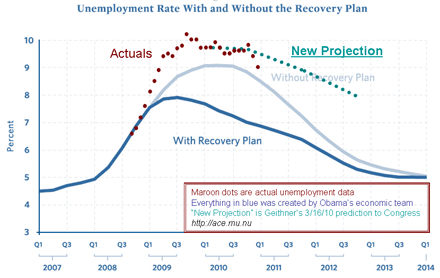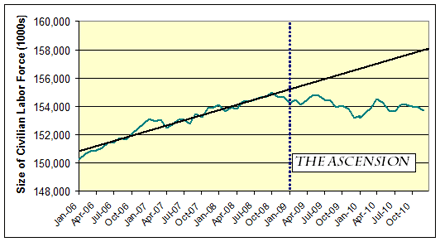Intermarkets' Privacy Policy
Support
Donate to Ace of Spades HQ!
Contact
Ace:aceofspadeshq at gee mail.com
Buck:
buck.throckmorton at protonmail.com
CBD:
cbd at cutjibnewsletter.com
joe mannix:
mannix2024 at proton.me
MisHum:
petmorons at gee mail.com
J.J. Sefton:
sefton at cutjibnewsletter.com
Recent Entries
Sunday Morning Book Thread - 12-28-2025 ["Perfessor" Squirrel]
Daily Tech News 28 December 2025
Saturday Night "Club ONT" December 27, 2025 [The 3 Ds]
Saturday Evening Movie Thread [moviegique]: Klaus (2019)
Hobby Thread - December 27, 2025 [TRex]
Ace of Spades Pet Thread, December 27
Gardening, Home and Nature Thread, Dec. 27
Thread before the Gardening Thread, December 27 - Irony
The Classical Saturday Coffee Break & Prayer Revival
Daily Tech News 27 December 2025
Daily Tech News 28 December 2025
Saturday Night "Club ONT" December 27, 2025 [The 3 Ds]
Saturday Evening Movie Thread [moviegique]: Klaus (2019)
Hobby Thread - December 27, 2025 [TRex]
Ace of Spades Pet Thread, December 27
Gardening, Home and Nature Thread, Dec. 27
Thread before the Gardening Thread, December 27 - Irony
The Classical Saturday Coffee Break & Prayer Revival
Daily Tech News 27 December 2025
Absent Friends
Jay Guevara 2025
Jim Sunk New Dawn 2025
Jewells45 2025
Bandersnatch 2024
GnuBreed 2024
Captain Hate 2023
moon_over_vermont 2023
westminsterdogshow 2023
Ann Wilson(Empire1) 2022
Dave In Texas 2022
Jesse in D.C. 2022
OregonMuse 2022
redc1c4 2021
Tami 2021
Chavez the Hugo 2020
Ibguy 2020
Rickl 2019
Joffen 2014
Jim Sunk New Dawn 2025
Jewells45 2025
Bandersnatch 2024
GnuBreed 2024
Captain Hate 2023
moon_over_vermont 2023
westminsterdogshow 2023
Ann Wilson(Empire1) 2022
Dave In Texas 2022
Jesse in D.C. 2022
OregonMuse 2022
redc1c4 2021
Tami 2021
Chavez the Hugo 2020
Ibguy 2020
Rickl 2019
Joffen 2014
AoSHQ Writers Group
A site for members of the Horde to post their stories seeking beta readers, editing help, brainstorming, and story ideas. Also to share links to potential publishing outlets, writing help sites, and videos posting tips to get published.
Contact OrangeEnt for info:
maildrop62 at proton dot me
maildrop62 at proton dot me
Cutting The Cord And Email Security
Moron Meet-Ups
TBD
« Democrats To Lobbyists: Help Us Fight Back Against The Mean Republicans |
Main
| Obama: I'll Let the GOP Talk About Austerity While I Talk About Jobs and Freebies »
Yes, The Chart, which brought me fame, fortune, and black helicopters buzzing lazily overhead, has become as pointless as the U-3 numbers it plots. It's partly because the number of people who have dropped out of the labor force has gotten so large. For example, the Household Survey says that 622K people dropped out of unemployment. Of these, 100K found jobs, 200K are "marginally attached" (i.e., they'll show up in the U-4, U-5, and U-6 unemployment rates), and 300K have dropped out of the work force entirely (they won't show up in any of the unemployment calculations). When 5/6 of your "improvement" is actually bad news, it's obvious that the U-3, and even the U-6 unemployment rates are not very useful (except in harassing the administration, of course).
Yeah, we should have 5 million more people in the labor force than we do today (maybe slightly smaller due to demographic shifts, but...). Pick a "U-", any "U-": Those people won't show up in any unemployment rate.
February 04, 2011
9.0%? A Number Full of Sound and Fury, Signifying Nothing
As mentioned below, the BLS released its unemployment report for January this morning. As you can see from The Chart, unemployment made another 0.4-point drop, falling from 9.4% to 9%. Unfortunately, that number, like The Chart itself, has become irrelevant to understanding the unemployment situation.
Yes, The Chart, which brought me fame, fortune, and black helicopters buzzing lazily overhead, has become as pointless as the U-3 numbers it plots. It's partly because the number of people who have dropped out of the labor force has gotten so large. For example, the Household Survey says that 622K people dropped out of unemployment. Of these, 100K found jobs, 200K are "marginally attached" (i.e., they'll show up in the U-4, U-5, and U-6 unemployment rates), and 300K have dropped out of the work force entirely (they won't show up in any of the unemployment calculations). When 5/6 of your "improvement" is actually bad news, it's obvious that the U-3, and even the U-6 unemployment rates are not very useful (except in harassing the administration, of course).
To see how bad it really is, check this out:
Yeah, we should have 5 million more people in the labor force than we do today (maybe slightly smaller due to demographic shifts, but...). Pick a "U-", any "U-": Those people won't show up in any unemployment rate.
The Household Survey numbers themselves had huge adjustments this month: the BLS revises its population numbers every year based on the latest Census Bureau estimates. This year, that pulled 500,000 people out of the labor force. I think the revision is a good thing - without it, the BLS would have reported that 590K people moved from unemployed to employed.....in a month where the Establishment Survey tells us that only 36K jobs were added. [The unemployment rate is based on the Household Survey, but the Establishment Survey (industry survey) is considered to be a more accurate gauge of how many jobs are added or lost.]
There may be a spot of good news in this report. The number of people employed part-time dropped by 780K, which would indicate that at least some of these job were converted to full-time positions. The number of part-timers has been swinging wildly lately, with fluctuations larger that those entering and leaving the workforce. It was increasing reasonably steadily over the last quarter of 2010, so seeing it drop is good news. But we'll see next month, w/o the effect of the adjustments to muddy the data.
Recent Comments
Ill-Informed:
"No pants, semi-literate. See you at noon. ..."
if you can dish it out: "152 @144 You've chosen your religion. Just don't ..."
Martini Farmer: "> The Nick Shirley video of the corruption in Minn ..."
Wolfus Aurelius, Dreaming of Elsewhere [/i] [/b] [/s]: "Almost time for the Book Thread! ..."
Heard In Wilmington, DE: "Who made the Bomb Cyclone in my pants? ..."
Way, Way Downriver [/i]: "@144 You've chosen your religion. Just don't try ..."
SpeakingOf: "135 Pixy, any recommendations for a kid's budget g ..."
San Franpsycho: "Those fvcking Geminis. So two-faced. ..."
Skip : "Samsung has a share program betwee Samsung product ..."
r hennigantx: "145 The Buffalo Bills game today at 4pm should be ..."
JackStraw: ">> I saw 1 post on X that the Somalis have somethi ..."
Derak: "Posted by: SpeakingOf at December 28, 2025 08:45 A ..."
if you can dish it out: "152 @144 You've chosen your religion. Just don't ..."
Martini Farmer: "> The Nick Shirley video of the corruption in Minn ..."
Wolfus Aurelius, Dreaming of Elsewhere [/i] [/b] [/s]: "Almost time for the Book Thread! ..."
Heard In Wilmington, DE: "Who made the Bomb Cyclone in my pants? ..."
Way, Way Downriver [/i]: "@144 You've chosen your religion. Just don't try ..."
SpeakingOf: "135 Pixy, any recommendations for a kid's budget g ..."
San Franpsycho: "Those fvcking Geminis. So two-faced. ..."
Skip : "Samsung has a share program betwee Samsung product ..."
r hennigantx: "145 The Buffalo Bills game today at 4pm should be ..."
JackStraw: ">> I saw 1 post on X that the Somalis have somethi ..."
Derak: "Posted by: SpeakingOf at December 28, 2025 08:45 A ..."
Recent Entries
Sunday Morning Book Thread - 12-28-2025 ["Perfessor" Squirrel]
Daily Tech News 28 December 2025
Saturday Night "Club ONT" December 27, 2025 [The 3 Ds]
Saturday Evening Movie Thread [moviegique]: Klaus (2019)
Hobby Thread - December 27, 2025 [TRex]
Ace of Spades Pet Thread, December 27
Gardening, Home and Nature Thread, Dec. 27
Thread before the Gardening Thread, December 27 - Irony
The Classical Saturday Coffee Break & Prayer Revival
Daily Tech News 27 December 2025
Daily Tech News 28 December 2025
Saturday Night "Club ONT" December 27, 2025 [The 3 Ds]
Saturday Evening Movie Thread [moviegique]: Klaus (2019)
Hobby Thread - December 27, 2025 [TRex]
Ace of Spades Pet Thread, December 27
Gardening, Home and Nature Thread, Dec. 27
Thread before the Gardening Thread, December 27 - Irony
The Classical Saturday Coffee Break & Prayer Revival
Daily Tech News 27 December 2025
Search
Polls! Polls! Polls!
Frequently Asked Questions
The (Almost) Complete Paul Anka Integrity Kick
Primary Document: The Audio
Paul Anka Haiku Contest Announcement
Integrity SAT's: Entrance Exam for Paul Anka's Band
AllahPundit's Paul Anka 45's Collection
AnkaPundit: Paul Anka Takes Over the Site for a Weekend (Continues through to Monday's postings)
George Bush Slices Don Rumsfeld Like an F*ckin' Hammer
Paul Anka Haiku Contest Announcement
Integrity SAT's: Entrance Exam for Paul Anka's Band
AllahPundit's Paul Anka 45's Collection
AnkaPundit: Paul Anka Takes Over the Site for a Weekend (Continues through to Monday's postings)
George Bush Slices Don Rumsfeld Like an F*ckin' Hammer
Top Top Tens
Democratic Forays into Erotica
New Shows On Gore's DNC/MTV Network
Nicknames for Potatoes, By People Who Really Hate Potatoes
Star Wars Euphemisms for Self-Abuse
Signs You're at an Iraqi "Wedding Party"
Signs Your Clown Has Gone Bad
Signs That You, Geroge Michael, Should Probably Just Give It Up
Signs of Hip-Hop Influence on John Kerry
NYT Headlines Spinning Bush's Jobs Boom
Things People Are More Likely to Say Than "Did You Hear What Al Franken Said Yesterday?"
Signs that Paul Krugman Has Lost His Frickin' Mind
All-Time Best NBA Players, According to Senator Robert Byrd
Other Bad Things About the Jews, According to the Koran
Signs That David Letterman Just Doesn't Care Anymore
Examples of Bob Kerrey's Insufferable Racial Jackassery
Signs Andy Rooney Is Going Senile
Other Judgments Dick Clarke Made About Condi Rice Based on Her Appearance
Collective Names for Groups of People
John Kerry's Other Vietnam Super-Pets
Cool Things About the XM8 Assault Rifle
Media-Approved Facts About the Democrat Spy
Changes to Make Christianity More "Inclusive"
Secret John Kerry Senatorial Accomplishments
John Edwards Campaign Excuses
John Kerry Pick-Up Lines
Changes Liberal Senator George Michell Will Make at Disney
Torments in Dog-Hell
Greatest Hitjobs
The Ace of Spades HQ Sex-for-Money Skankathon
A D&D Guide to the Democratic Candidates
Margaret Cho: Just Not Funny
More Margaret Cho Abuse
Margaret Cho: Still Not Funny
Iraqi Prisoner Claims He Was Raped... By Woman
Wonkette Announces "Morning Zoo" Format
John Kerry's "Plan" Causes Surrender of Moqtada al-Sadr's Militia
World Muslim Leaders Apologize for Nick Berg's Beheading
Michael Moore Goes on Lunchtime Manhattan Death-Spree
Milestone: Oliver Willis Posts 400th "Fake News Article" Referencing Britney Spears
Liberal Economists Rue a "New Decade of Greed"
Artificial Insouciance: Maureen Dowd's Word Processor Revolts Against Her Numbing Imbecility
Intelligence Officials Eye Blogs for Tips
They Done Found Us Out, Cletus: Intrepid Internet Detective Figures Out Our Master Plan
Shock: Josh Marshall Almost Mentions Sarin Discovery in Iraq
Leather-Clad Biker Freaks Terrorize Australian Town
When Clinton Was President, Torture Was Cool
What Wonkette Means When She Explains What Tina Brown Means
Wonkette's Stand-Up Act
Wankette HQ Gay-Rumors Du Jour
Here's What's Bugging Me: Goose and Slider
My Own Micah Wright Style Confession of Dishonesty
Outraged "Conservatives" React to the FMA
An On-Line Impression of Dennis Miller Having Sex with a Kodiak Bear
The Story the Rightwing Media Refuses to Report!
Our Lunch with David "Glengarry Glen Ross" Mamet
The House of Love: Paul Krugman
A Michael Moore Mystery (TM)
The Dowd-O-Matic!
Liberal Consistency and Other Myths
Kepler's Laws of Liberal Media Bias
John Kerry-- The Splunge! Candidate
"Divisive" Politics & "Attacks on Patriotism" (very long)
The Donkey ("The Raven" parody)



